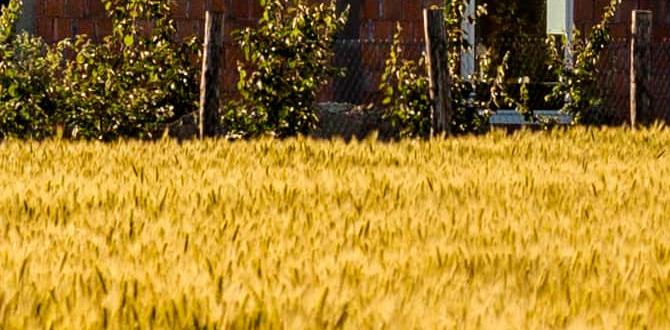Beirut and its surrounding areas can be explored wonderfully with a 2-week itinerary packed with history, culture, and delicious food. This essential guide provides a balanced mix of iconic sights and local experiences, ensuring a stress-free and memorable trip for beginners.
Planning a trip to Beirut can feel a bit overwhelming, especially if it’s your first time. You want to see the best sights, taste the local flavors, and really get a feel for the city, but where do you start? It’s easy to get lost in endless lists of attractions. Let’s simplify it together. This guide breaks down a fantastic two-week journey, giving you a clear roadmap. We’ll cover everything from ancient ruins to vibrant markets, making sure you enjoy every moment of your Lebanese adventure with ease and confidence. Get ready to explore!
Beirut 2 Weeks Itinerary: Your Essential Guide
Beirut, often called the “Paris of the Middle East,” is a city of fascinating contrasts. It’s a place where ancient history meets modern vibrancy, where the aromas of delicious Lebanese cuisine fill the air, and where friendly locals are eager to share their culture. Two weeks is the perfect amount of time to truly soak it all in, exploring the city and venturing out to discover the natural and historical wonders of Lebanon. This itinerary is designed for beginners, offering a balanced pace with plenty of opportunities for discovery and relaxation.
Why Two Weeks in Beirut?
Two weeks allows you to experience Beirut at a comfortable pace, without feeling rushed. It gives you ample time to:
Explore the City: Dive deep into Beirut’s diverse neighborhoods, from the historic Downtown to the artistic Hamra.
Discover Lebanon’s Heritage: Easily take day trips to UNESCO World Heritage sites like Byblos and Baalbek.
Enjoy the Cuisine: Savor the rich flavors of Lebanese food, from bustling street food stalls to elegant fine dining.
Relax and Recharge: Find time to enjoy the Mediterranean coast or simply unwind in a charming café.
Experience Local Life: Connect with the warm Lebanese culture and understand its resilient spirit.
This guide is crafted to ensure your travel is as smooth as possible, focusing on practical tips and a well-structured plan, much like packing the right essentials for any trip to ensure comfort and preparation.
Getting Started: Practical Tips for Your Beirut Adventure
Before we dive into the daily itinerary, here are a few essential tips to make your trip smoother. Think of these as your travel companions, ensuring peace of mind throughout your journey.
Best Time to Visit: Spring (March-May) and Autumn (September-November) offer pleasant weather, perfect for exploring. Summer can be very hot, while winter can bring rain.
Visa Requirements: Check with your local embassy for the most up-to-date visa information for Lebanon. Many nationalities can get a visa on arrival.
Currency: The currency is the Lebanese Pound (LBP). While credit cards are accepted in many larger establishments, it’s wise to carry some cash for smaller shops, markets, and taxis. Exchange rates can fluctuate, so stay informed.
Language: Arabic is the official language. French and English are widely spoken, especially in Beirut, making communication relatively easy.
Getting Around Beirut: Taxis and ride-sharing apps like Bolt or Uber are common and affordable. Walking is also a great way to explore specific neighborhoods. For longer distances or day trips, consider hiring a private driver or using intercity buses.
Connectivity: Purchase a local SIM card upon arrival for easy data access. Mobile networks are generally reliable.
Safety: Beirut is generally a safe city for tourists. However, as with any major city, be aware of your surroundings, especially at night, and keep valuables secure. It’s always wise to have travel insurance, especially when traveling with children or if you require specific personal care items like adult diapers for added peace of mind on long journeys.
Your 14-Day Beirut & Beyond Itinerary
This itinerary is a suggestion and can be customized to your interests and pace. We’ve balanced iconic historical sites with cultural experiences and opportunities to relax.
Week 1: Diving into Beirut’s Heart
Day 1: Arrival and Downtown Exploration
Morning/Afternoon: Arrive at Beirut–Rafic Hariri International Airport (BEY). Arrange for a pre-booked airport transfer or take a taxi to your accommodation. Settle in and perhaps take a short rest.
Late Afternoon: Begin your exploration in the Downtown Beirut (Saifi Village & Martyrs’ Square) area. This district has been beautifully reconstructed and showcases a mix of modern architecture and historical remnants.
Evening: Enjoy your first taste of authentic Lebanese cuisine at a restaurant in Downtown. Try some classic mezze like hummus, tabbouleh, and fatoush.
Day 2: History and Art in Beirut
Morning: Visit the National Museum of Beirut. It houses an impressive collection of Lebanese artifacts spanning thousands of years, from prehistoric times to the Mamluk era. This is an essential stop to understand the region’s rich past.
Afternoon: Explore the Sursock Museum (Beit Beirut), known for its stunning architecture and contemporary art exhibitions. Wander through the nearby streets of Achrafieh and admire the blend of old and new buildings.
Evening: Head to the vibrant Gemmayzeh street for dinner and drinks. It’s known for its lively atmosphere, trendy bars, and excellent restaurants.
Day 3: The Corniche and Pigeon Rocks
Morning: Take a leisurely stroll or a bike ride along the Corniche, Beirut’s seaside promenade. Enjoy the fresh sea air and watch locals go about their day.
Afternoon: Visit the iconic Pigeon Rocks (Raouché Rocks), a natural landmark rising from the sea. It’s a popular spot for photos, especially at sunset. You can find small boats offering short trips around the rocks.
Evening: Enjoy dinner at a restaurant overlooking the Pigeon Rocks, offering a beautiful view as the sun dips below the horizon.
Day 4: Hamra Street and Shopping
Morning: Explore Hamra Street, once the intellectual and commercial hub of Beirut. It’s still a bustling area with shops, bookstores, cafes, and universities.
Afternoon: Browse the shops, grab a coffee at a traditional Lebanese café, and soak in the lively street atmosphere. You might find unique souvenirs here.
Evening: Hamra offers diverse dining options, from casual eateries to more upscale restaurants. Consider trying some local Shawarma from a popular spot.
Day 5: Day Trip to Byblos (Jbeil)
Full Day: Take a day trip to Byblos, one of the oldest continuously inhabited cities in the world, a UNESCO World Heritage site. It’s about a 45-minute drive north of Beirut.
Discover the ancient Phoenician ruins: Explore the Crusader Castle, the Roman Amphitheater, and the Phoenician Necropolis.
Wander through the charming old souk: Browse local crafts and enjoy the picturesque harbor.
Visit the historic port: Imagine centuries of trade passing through this ancient gateway.
Evening: Return to Beirut. Have a relaxed dinner near your accommodation.
Day 6: Jeita Grotto and Harissa
Morning: Visit the breathtaking Jeita Grotto, a complex of two limestone caves. Take a boat ride through the lower cave and marvel at the stunning stalactites and stalagmites.
Afternoon: Ascend to Harissa to visit the Shrine of Our Lady of Lebanon. Take the Teleferique (cable car) for panoramic views of the bay of Jounieh and the surrounding mountains. The views are truly spectacular.
Evening: Enjoy dinner with a view in the Jounieh area, or head back to Beirut.
Day 7: Relaxation or Local Markets
Morning: Choose your adventure:
Relax: Enjoy a slower morning, revisit a favorite cafe, or explore a neighborhood you missed.
Markets: Visit the Gourmet Food Market (if available, check local listings) or local produce markets for a vibrant sensory experience.
Afternoon: Perhaps visit the American University of Beirut (AUB) campus and its museum for a peaceful stroll and a glimpse of academic life in the city.
Evening: Enjoy a farewell dinner for the first week, perhaps trying a restaurant specializing in fresh seafood.
Week 2: Exploring Lebanon’s Treasures
Day 8: Day Trip to Baalbek
Full Day: Embark on a journey to Baalbek, another UNESCO World Heritage site, renowned for its colossal Roman temples. This is a longer day trip, about 1.5 to 2 hours drive from Beirut, and is considered one of the most important archaeological sites in the Roman Empire.
Marvel at the Temple of Jupiter: See its massive, imposing columns, some of the tallest ancient columns in the world.
Explore the Temple of Bacchus: This remarkably well-preserved temple is often considered the highlight.
Visit the Temple of Venus and the Great Courtyard.
Evening: Return to Beirut. This trip can be educational and exciting for families, though keeping young children engaged might require planning, just as ensuring comfort with something like travel-sized diapers can make extensive outings easier.
Day 9: Chouf Mountains – Beiteddine Palace & Deir El Qamar
Full Day: Venture into the picturesque Chouf Mountains, a stunning region known for its cedar forests and traditional villages.
Beiteddine Palace: Visit this exquisite 19th-century palace, a masterpiece of Lebanese architecture showcasing intricate mosaics, marble, and courtyards.
Deir El Qamar: Explore this beautifully restored traditional stone village, known for its charming streets, historic buildings, and beautiful mountain panoramas.
Evening: Enjoy a traditional Lebanese meal in a mountain village or return to Beirut for dinner.
Day 10: Sidon (Saida) and Tyre (Sour)
Full Day: Head south to explore two significant ancient Phoenician cities.
Sidon: Visit the impressive Crusader Sea Castle, the old souk, and the Khan al-Franj (a historic caravanserai).
Tyre: Explore the UNESCO World Heritage sites of Tyre, including the Roman Hippodrome, the impressive Roman ruins, and the ancient port. Tyre is famous for its vibrant colors and historical depth.
Evening: Return to Beirut.
Day 11: Escape to Nature – Cedars of God (Bcharri) or Akoura Lakes
Full Day: Choose a nature escape:
Option A (Distant but Iconic): Travel north to Bcharri to visit the famous Cedars of God, a forest of ancient trees that are symbolic of Lebanon. This is a longer day trip (approx. 2.5 hours each way) and might be best combined with an overnight stay if you plan to explore more of the north.
Option B (Closer Alternative): Visit the beautiful Akoura Lakes in the mountains for hiking and enjoying nature. This offers stunning scenery and fresh air without the long drive.
Evening: Return to Beirut.
Day 12: Arts, Crafts, and Local Flavors
Morning: Explore more of Beirut’s artistic side. Visit smaller galleries or craft workshops. Consider neighborhoods like Mar Mikhael, known for its vibrant street art and creative energy.
Afternoon: Take part in a Lebanese cooking class to learn how to prepare some of your favorite dishes. This is a fun and interactive way to engage with the local culture.
Evening: Enjoy the fruits of your labor or dine at a restaurant recommended by your cooking instructor.
Day 13: Museum Row or Relaxation
Morning: Choose to delve deeper into Beirut’s cultural offerings:
Museum Day: Visit the Mim Museum (Mineral Museum) with its spectacular collection of minerals from around the world, or revisit a museum you particularly enjoyed.
Relaxation: Enjoy a final day at one of Beirut’s beaches or a spa.
Afternoon: Do some last-minute souvenir shopping. Look for local crafts, spices, or sweets. The Bourj Hammoud area offers a unique mix of Armenian culture and excellent shopping for jewelry and crafts.
Evening: Indulge in a special farewell dinner at one of Beirut’s top restaurants, celebrating your incredible journey.
Day 14: Departure
Morning: Enjoy a final Lebanese breakfast. Depending on your flight schedule, you might have time for a last walk along the Corniche or a quick visit to a local bakery.
Afternoon: Head to Beirut–Rafic Hariri International Airport (BEY) for your departure, filled with memories of your Lebanese adventure.
Sample Cost Estimate for 2 Weeks in Beirut
This is a rough estimate and can vary significantly based on your travel style, accommodation choices, and dining preferences. Prices are in USD for ease of understanding.
| Category | Budget Traveler (per person) | Mid-Range Traveler (per person) | Comfort Traveler (per person) |
|---|---|---|---|
| Accommodation (14 nights) | $350 – $700 (Hostels, budget guesthouses) | $700 – $1400 (3-4 star hotels) | $1400 – $3000+ (4-5 star hotels, boutique stays) |
| Food & Drink (14 days) | $280 – $420 (Street food, local eateries) | $420 – $700 (Mix of local eateries and mid-range restaurants) | $700 – $1400+ (Fine dining, international cuisine) |
| Activities & Entrance Fees | $100 – $150 (Focus on free sights, select paid attractions) | $150 – $250 (Most major attractions, some tours) | $250 – $400+ (Private tours, unique experiences) |
| Local Transportation | $50 – $80 (Public transport, shared taxis, ride-sharing) | $80 – $150 (Ride-sharing, occasional private taxi) | $200 – $400 (Private driver for day trips, taxis) |
| Miscellaneous (Souvenirs, etc.) | $50 – $100 | $100 – $200 | $200 – $400+ |
| Total Estimated (14 Days) | $830 – $1450 | $1450 – $2700 | $2750 – $5600+ |
Note: This estimate excludes international flights and visa fees. It’s always a good idea to add a buffer for unexpected expenses.
Frequently Asked Questions (FAQ)
Q1: Is Beirut safe for solo female travelers?
A1: Yes, Beirut is generally considered safe for solo female travelers. Like any major city, it’s wise to be aware of your surroundings, avoid walking alone in poorly lit areas late at night, and dress respectfully, especially when visiting religious sites. Many solo female travelers find the Lebanese people to be warm and hospitable.
Q2: What are the must-try Lebanese foods?
A2: You absolutely must try Mezze (a selection of small dishes) including hummus, baba ghanoush, tabbouleh, fattoush, and kibbeh. For main courses, explore shawarma, falafel, grilled meats (kebabs), and Manakish (a type of flatbread often topped with zaatar or cheese). Don’t forget to indulge in Lebanese sweets like baklava!
Q3: Can I get around Beirut without speaking Arabic?
A3: Yes, absolutely. English and French are widely spoken in Beirut, especially in tourist areas, hotels, restaurants, and by taxi drivers. Learning a few basic Arabic phrases like “Shukran” (thank you) and “Merhaba” (hello) is always appreciated by locals.
Q4: Is it easy to find vegetarian or vegan options in Beirut?
A4: Yes, Lebanese cuisine is naturally rich in vegetarian and vegan options. Mezze dishes like hummus, baba ghanoush, tabbouleh, and fattoush are all plant-based. You’ll also find falafel and many vegetable stews. Many restaurants will be happy to accommodate dietary needs.
Q5: What should I pack for a two-week trip to Beirut and Lebanon?
A5: Pack light, comfortable clothing for warm weather, a light jacket for evenings or cooler mountain air, comfortable walking shoes, sunscreen, a hat, and sunglasses. Modest clothing (covering shoulders and knees) is advisable for visiting religious sites. For women, a headscarf can be useful for entering mosques. If you’re traveling with children or require personal care, packing essentials like child diapers or adult versions ensures comfort and preparedness no matter the activity.
Q6: How much should I tip in Lebanon?
A6: Tipping is customary in Lebanon. For restaurants, a service charge of




